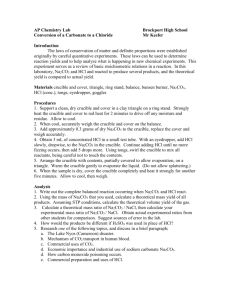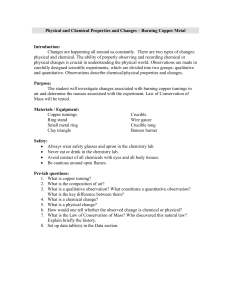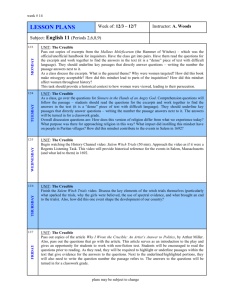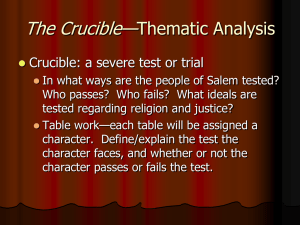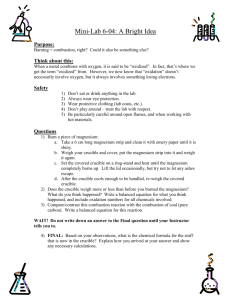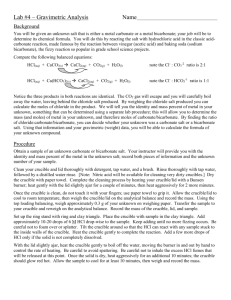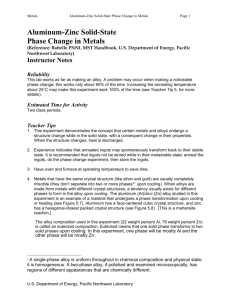compoundlab
advertisement
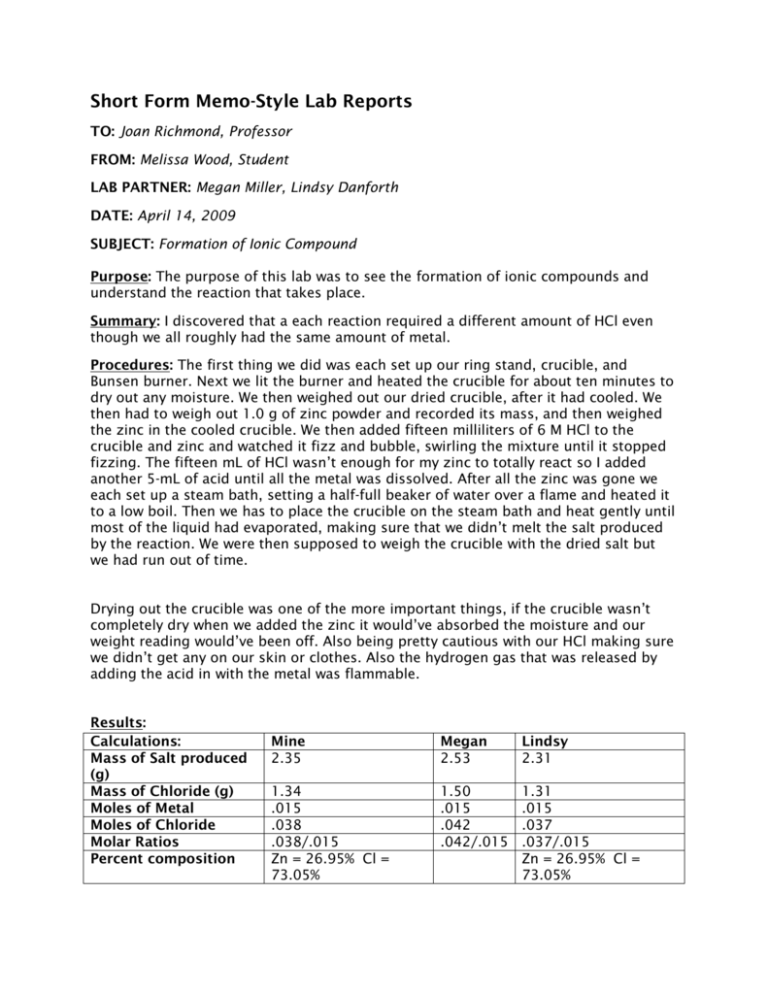
Short Form Memo-Style Lab Reports TO: Joan Richmond, Professor FROM: Melissa Wood, Student LAB PARTNER: Megan Miller, Lindsy Danforth DATE: April 14, 2009 SUBJECT: Formation of Ionic Compound Purpose: The purpose of this lab was to see the formation of ionic compounds and understand the reaction that takes place. Summary: I discovered that a each reaction required a different amount of HCl even though we all roughly had the same amount of metal. Procedures: The first thing we did was each set up our ring stand, crucible, and Bunsen burner. Next we lit the burner and heated the crucible for about ten minutes to dry out any moisture. We then weighed out our dried crucible, after it had cooled. We then had to weigh out 1.0 g of zinc powder and recorded its mass, and then weighed the zinc in the cooled crucible. We then added fifteen milliliters of 6 M HCl to the crucible and zinc and watched it fizz and bubble, swirling the mixture until it stopped fizzing. The fifteen mL of HCl wasn’t enough for my zinc to totally react so I added another 5-mL of acid until all the metal was dissolved. After all the zinc was gone we each set up a steam bath, setting a half-full beaker of water over a flame and heated it to a low boil. Then we has to place the crucible on the steam bath and heat gently until most of the liquid had evaporated, making sure that we didn’t melt the salt produced by the reaction. We were then supposed to weigh the crucible with the dried salt but we had run out of time. Drying out the crucible was one of the more important things, if the crucible wasn’t completely dry when we added the zinc it would’ve absorbed the moisture and our weight reading would’ve been off. Also being pretty cautious with our HCl making sure we didn’t get any on our skin or clothes. Also the hydrogen gas that was released by adding the acid in with the metal was flammable. Results: Calculations: Mass of Salt produced (g) Mass of Chloride (g) Moles of Metal Moles of Chloride Molar Ratios Percent composition Mine 2.35 Megan 2.53 Lindsy 2.31 1.34 .015 .038 .038/.015 Zn = 26.95% Cl = 73.05% 1.50 .015 .042 .042/.015 1.31 .015 .037 .037/.015 Zn = 26.95% Cl = 73.05% My calculations show that Lindsy and I have the same molar ratio (.038 Cl over .015 Zn) where as Megan’s Chloride is slightly higher yet her Zinc is the same. This could be attributed to human error or my not doing the calculation right but Lindsy and I both had the same ratios so I’m unsure of that. Also Megan’s amount of salt produced was nearly .2 grams higher than both Lindsy and mine; also Megan’s mass of Chloride is also about .2grams higher so maybe that could be why our final numbers are different. From this I’d conclude that with more salt produced by the reaction the higher the mass of Chloride is which then gives you a different molar ratio and percent composition. Mine Dried Crucible mass (g) Zn Mass (g) Volume of HCl (mL) Mass crucible + salt (g) 131.02 1.01 19.9 133.37 Megan 132.98 1.03 14.6 135.51 Lindsy 133.32 1.00 14.8 135.63



